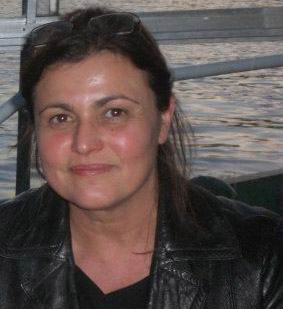Theoretical and Critical Problems of the Margins Today
Lecture series at the Ludwig Museum – Museum of Contemporary Art, Budapest, April 2012 & February 2013
How can the margins be viewed in art, in the new world order, after the fall of the Berlin Wall and the new era of globalization, when the cultural canons seem to have disappeared, when there is no longer a master narrative nor a distinct center? Can we still speak about margins at all? Or have they been shifted to another geopolitical sphere? This lecture series, Theoretical and Critical Problems of the Margins Today, takes a look at the theoretical presuppositions and implications of “marginality” and how this position has changed. What are the potential advantages and disadvantages for artistic production and critical thought?
More than twenty years after the political transformations that occurred at the end of the Cold War, the situation and position of art and art history in East-Central Europe has changed in which physical and cultural proximity are complexly interrelated. We find ourselves in a pluralistic global market of ideas, circulating within uncertain, fluctuating boundaries between different paradigms and competing theories. However, there is always the wish to find a reference point from which to establish an orientation and to learn more about different theories so that the region can productively use them for our own situation. Within the context of the Budapest Ludwig lecture series, we asked leading art theoreticians to view the present situation and the critical criteria for an art theory that would contribute to interpreting the marginal or ex-marginal. Is there an art theory that reckons with the East-Central European region? If yes, in what ways? What are the possibilities for introducing new paradigms/problems (post-colonial, “horizontal” art history, global exhibition culture, revolutionary ideas, transnational, traveling concepts) in response to the end of the Cold War? In what ways do current approaches refer back to Cold War paradigms.
The series as a whole sought to trigger transnational, critical modes of positioning and analyzing theoretical, art-critical, and art-institutional problems. To date, Piotr Piotrowski, Marina Grzinic, Alexander Alberro and Boris Groys were invited and asked to reconceptualize the East-West problem within the framework of the margins. The lecture series and the respondents’ reflections will constitute the basis of a forthcoming museum publication. The fifth speaker will be determined soon.
- Provincializing the West: Interview with Professor Piotr Piotrowski
- From Biopolitics to Necropolitics: Marina Grzinic in conversation with Maja and Reuben Fowkes

 Hedvig Turai is an art historian and critic living and working in Budapest. Her main interests are gender issues in art and theory, Holocaust and contemporary art, and the art of dictatorships. She has published a book on the Hungarian painter Margit Anna. Turai is a frequent contributor to ARTMargins.
Hedvig Turai is an art historian and critic living and working in Budapest. Her main interests are gender issues in art and theory, Holocaust and contemporary art, and the art of dictatorships. She has published a book on the Hungarian painter Margit Anna. Turai is a frequent contributor to ARTMargins.

